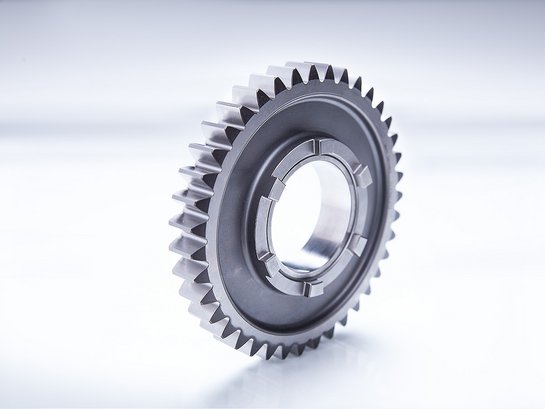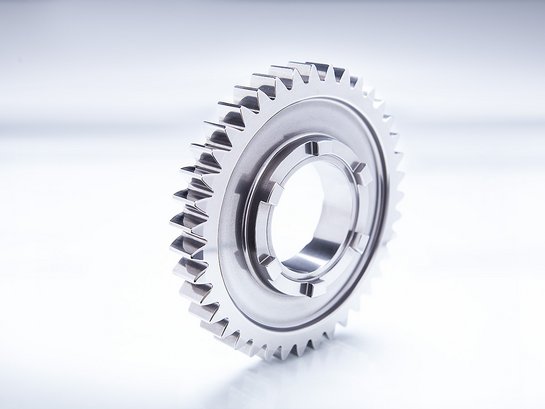

喷丸强化处理中,通过使用专用磨料进行针对性加工,使工件的表面结构得到加强,并使其具有更强的耐受性。
喷丸强化处理工艺中,会指定专门精选的丸料,以可重复的方式应用在各种表面上,尤其是金属表面。通过将所谓的残余压应力传入表面中,并达到最大穿透深度,进而大大延长高应力部件(齿轮、涡轮叶片等)的使用寿命。出于安全考虑,喷丸强化处理在例如航空航天工业中是不可或缺的。
该工艺对于电动车领域也至关重要。在该领域:减轻重量等于提高性能,也相当于同样资源投入以延长行驶里程。使用喷丸强化处理工艺,可以让安装在现代化车辆上并且形状上和重量上经过优化的部件更加牢固和耐用。
我们的喷丸强化工艺的特点还有智能的工艺监控、创新的细节和使用寿命特别长的元件,特别有以下这些:
- 丸料流量可根据所采用的丸料为金属还是非金属丸料来决定是采用磁控阀还是科里奥利计量系统来进行控制。
- 通过我们的 HMI 界面系统“PC Supervisor”在加工过程中实现数据的自动采集、分析、处理和存储,以达到最高工艺的稳定性和生产安全性。
- 借助完善的分类系统对丸料进行后续处理。
What Makes Rösler’s Shot Peening Technology Special?
Rösler’s shot blasting and shot peening work stand out through intelligent process monitoring, innovative details, and durable components, including:
- Monitoring of the shot stream during air blast systems via magnetic measurement or Coriolis dosing systems – depending on whether metallic or non-metallic peening media are used.
- Use of the Rösler Power Line Valve for regulation in centrifugal blast wheel operations.
- Automatic acquisition, evaluation, and storage of process data through the HMI system “PC Supervisor” for maximum process safety in air blast systems.
- Efficient shot circulation using advanced classification systems, such as flow-optimized air separation, sieving for shot size classification, and media entrance location optimization.
- Workpiece transport monitoring for continuous reliability.
- High-performance RUTTEN Gamma turbines with reversible blades, delivering up to 16 times longer service life and ensuring a stable blast stream with minimal adjustment needs.
What You Should Know About Shot Peening
Frequently Asked Questions
Frequently Asked Questions
How Does Shot Peening Work? – Residual stress creates increased part strength
Strength is forged under pressure: In the shot peening process, carefully selected round metallic media are accelerated at high velocity and consistently directed onto the metal surface of gears, connecting rods, crankshafts, and similar parts.
Upon impact, they induce compressive residual stress in the surface layer and down to a maximum penetration depth. This effect significantly increases the fatigue resistance of highly stressed components such as gear teeth, turbine blades, and connecting rods.
The principle behind this cold working process is similar to forging metal – but instead of a hammer, the material is compacted by the high-energy shot flow. Each individual shot particle produces microscopic plastic deformation, and in total, these overlapping passes result in a continuous layer of beneficial compressive stresses.
What Are the Advantages of Shot Peening?
After shot peening, the metal surface is stronger, less prone to stress corrosion, and more resistant to corrosion fatigue. It shows improved mechanical properties, longer fatigue life, and increased fatigue resistance (e.g., in springs, crankshafts, and connecting rods). Particularly in aerospace, the process development of shot peening since the 1950s has been advanced rapidly. Today, the advantages of shot peening are indispensable in numerous industries.
Whether used for turbine blades, engine blocks, suspension parts, or structural components – shot peening protects against fatigue cracks, optimizes weight, and increases durability under continuous stress.
In aerospace, where all parts are exposed to extreme tensile stresses and operating loads, shot peening has become a standard method to introduce compression stresses into the surface. It is now used
Which Peening Media Are Used in the Shot Peening Process?

As the German term “Kugelstrahlen” suggests, cut wire shot or cast shot in a round metallic shape is typically used. The objective is to transfer impulse energy and induce residual compressive stress in the surface zone of the workpiece.
The size of the peening media plays a critical role: larger media can penetrate deeper and introduce compressive stresses at greater depth, but may also cause excessive cold working and unwanted plastic deformation on the metal surface, reducing the beneficial effect.
Another critical factor is shot quality. Shot breakage can generate sharp-edged shot fragments that roughen or damage the surface, causing local weakening. To avoid this, high-quality peening media with narrow size distribution, high hardness, and low fracture tendency must be used.
Cut wire shot, produced from rounded wire sections, is particularly effective, as it ensures a consistent and stable desired surface effect during shot blasting.
For Which Industries Is Shot Peening Essential?
In aerospace, shot peening is used to strengthen turbine blades, structural components, stringers, fan blades, and even complete aircraft cabins. It prevents stress corrosion cracking, delays fatigue cracks, and helps components withstand extreme operating conditions.
In e-mobility, where lower component weight means higher performance, reduced resource use, and longer range, shot peening enables the production of form-optimized, lightweight parts that are stronger and more durable.
